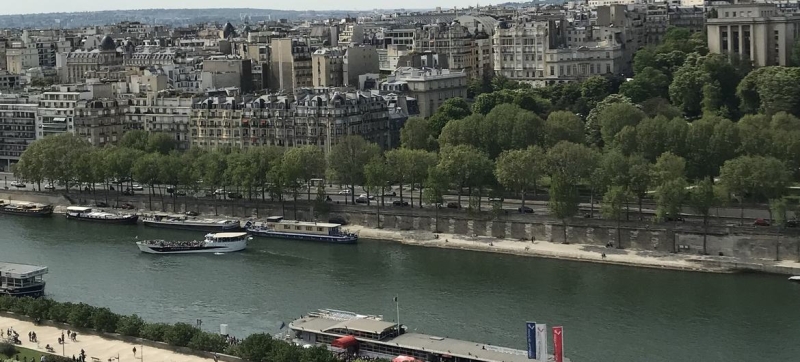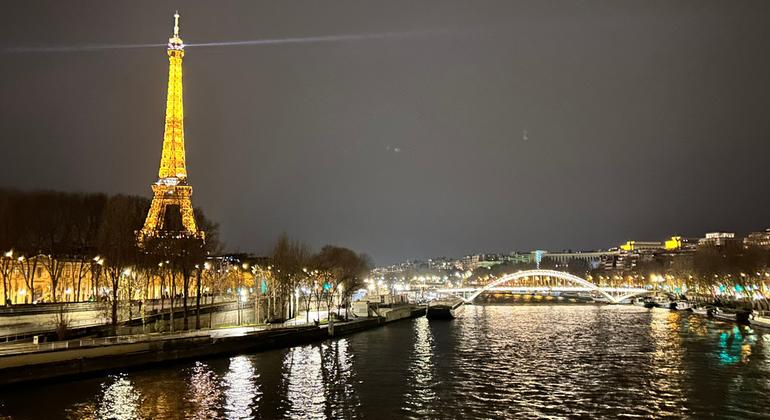
View of the Seine embankment. Paris 2024: The Olympics will open at a UNESCO World Heritage site for the first time in history Culture and Education
For the first time in the history of the modern Olympic Games, the opening ceremony of Paris 2024 will take place in the heart of the UNESCO World Heritage Site – on the banks of the Seine in Paris.
From the Ile Saint-Louis to the Eiffel Tower, from the Place de la Concorde to the Grand Palais, the magnificent architecture along the banks of the Seine testifies to the centuries-old history of Paris and France. UNESCO welcomes the fact that this “exceptional heritage”, recognized and protected by the UN Cultural Foundation, has been chosen by the organizers of Paris 2024 as the backdrop for the largest open-air opening ceremony in the history of the Olympic Games.
UNESCO Director General Audrey Azoulay announced this on the eve of the opening of the Olympics, which start on Friday. The opening ceremony of the games will be attended by more than 10 thousand people, including athletes, officials and representatives of the art world. The sports festival will be watched by more than 300 thousand Parisians and guests of the French capital, who will gather on both sides of the Seine, as well as hundreds of millions of television viewers around the world.
Architectural masterpieces
This opening ceremony is unusual in that it is not held in a stadium, but in the very center of the city, within an architectural ensemble that was included in the UNESCO World Heritage List in 1991 – on the banks of the Seine. Notre Dame Cathedral and Sainte-Chapelle are architectural masterpieces of the Middle Ages; The new bridge exemplifies the spirit of the French Renaissance; the coherence of the Marais and Ile Saint-Louis districts testifies to the Parisian urban planning of the 17th-18th centuries.
On the banks of the river there are the most striking examples of French classicism, such as the Louvre Palace, Invalides , Military School and Mint. The buildings of numerous world exhibitions held in Paris in the 19th and 20th centuries have also been preserved here. Topping the list is the Eiffel Tower, a universally recognized symbol of the French capital.
The large squares and avenues built by Georges Haussmann during the reign of Napoleon III influenced urban planning around the world, particularly in the major cities of Latin America.

Olympic events on the banks of the Seine
Over the next two weeks, a number of Olympic competitions will take place on the banks of the Seine, including beach volleyball around the Eiffel Tower, judo and wrestling on the Champs de Mars, marathon swimming at the Pont Alexandre III, fencing and taekwondo at the Grand Palais, and archery at the Esplanade. disabled people, as well as breakdancing, BMX freestyle, skateboarding and basketball on the Place de la Concorde. Triathlon, cycling and athletics competitions will also be held there. The Palace and Park of Versailles, a UNESCO World Heritage Site since 1979, will host equestrian competitions.
The Olympic torch relay, which reached France on May 12, is also attracting attention to the rich culture of the country – the torch was carried through almost thirty sites under the protection of UNESCO.
UNESCO World Heritage
Adopted in 1972, the UNESCO World Heritage Convention is now one of the most widely ratified international treaties, with 195 States Parties. In accordance with the UNESCO Convention, Member States undertake to preserve the world’s cultural and natural heritage.
For more than 50 years, almost 1,200 cultural and natural sites in 168 have been included in the UNESCO World Heritage List countries. Covering more than 3.5 million square kilometers of land and sea, the UNESCO World Heritage Sites are also true sanctuaries of biodiversity and traditions that reflect the identity of the local population.
On the territory of France, which hosts this year’s Olympic and Paralympic Games, there are 52 cultural and natural sites included in the UNESCO World Heritage List.
